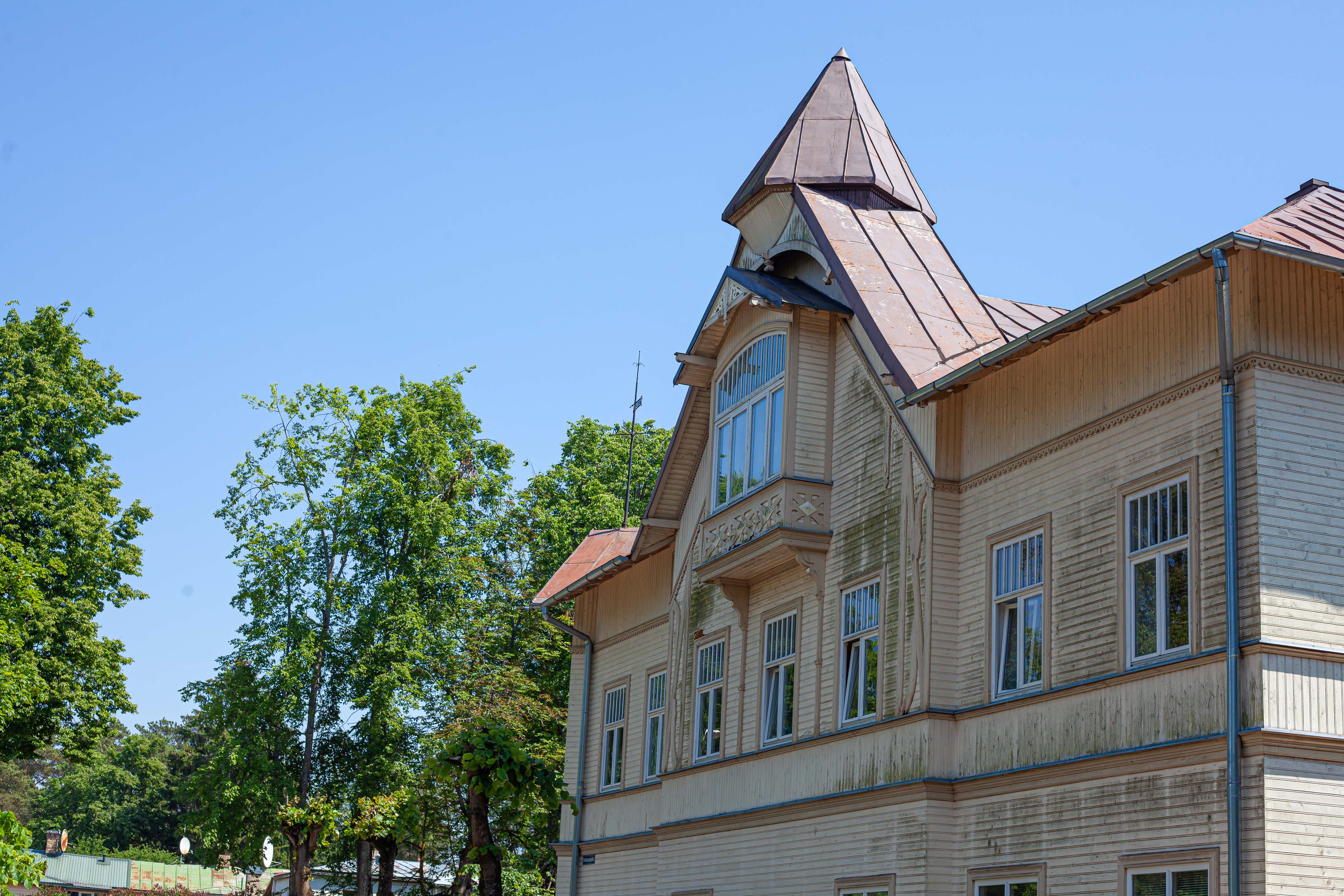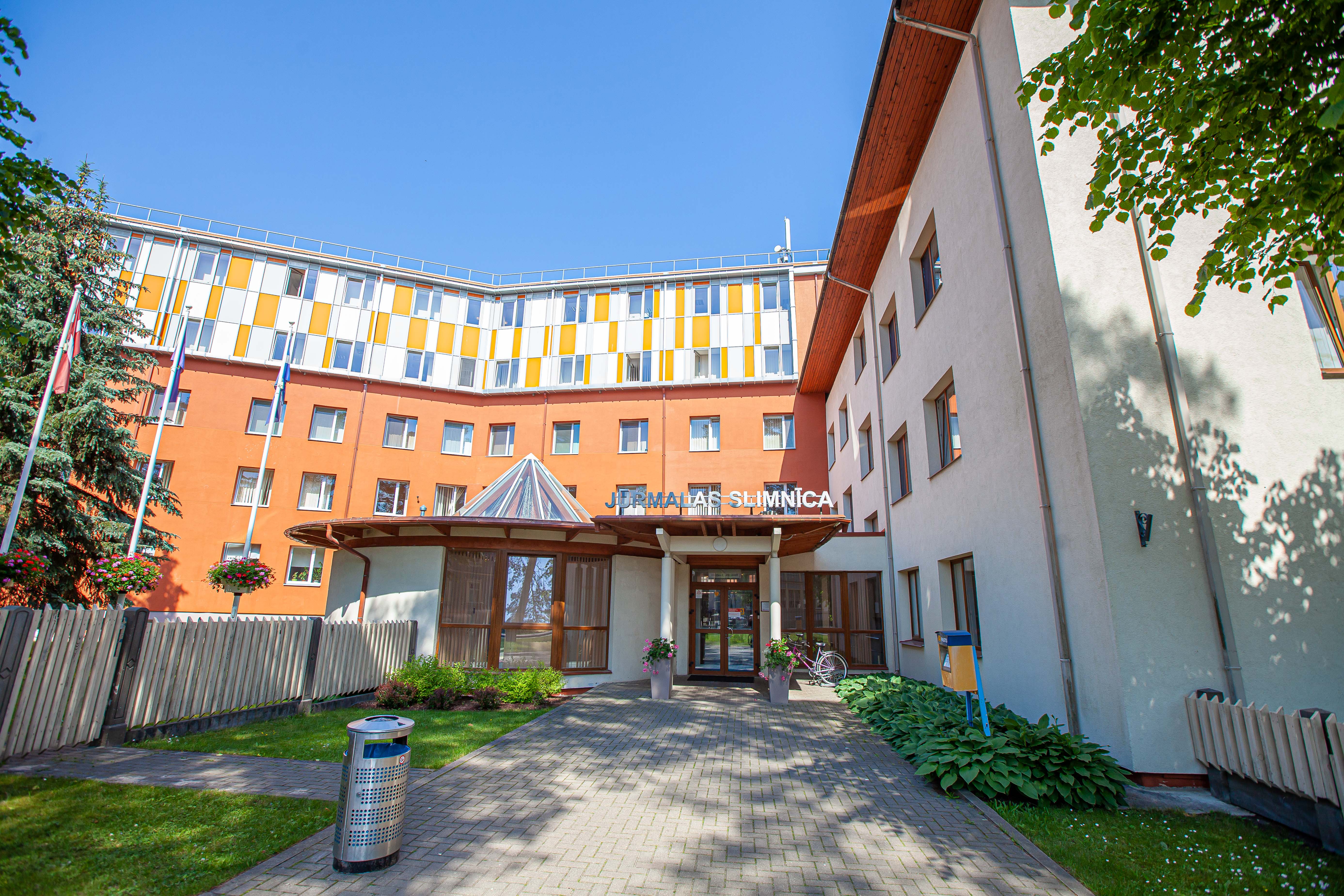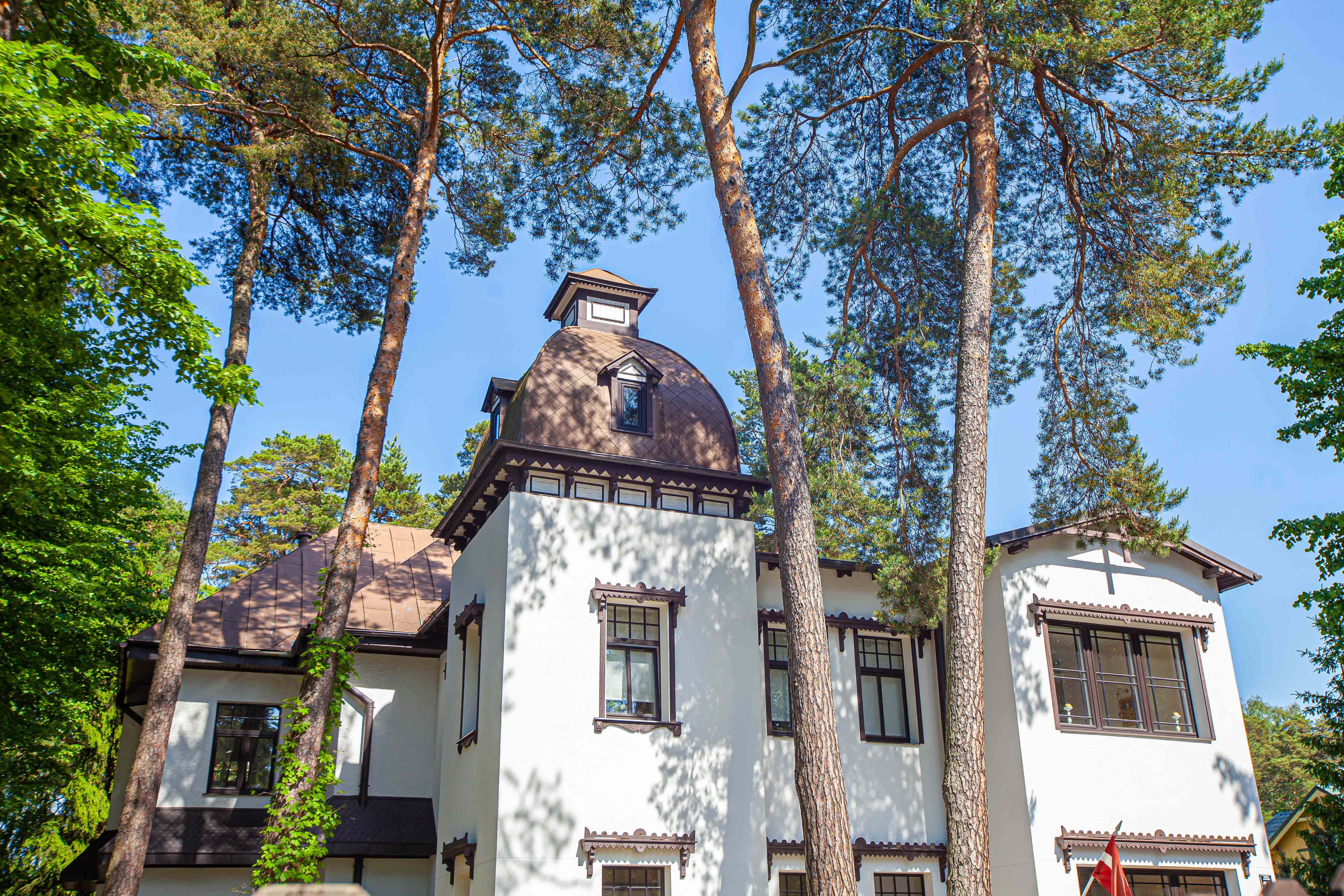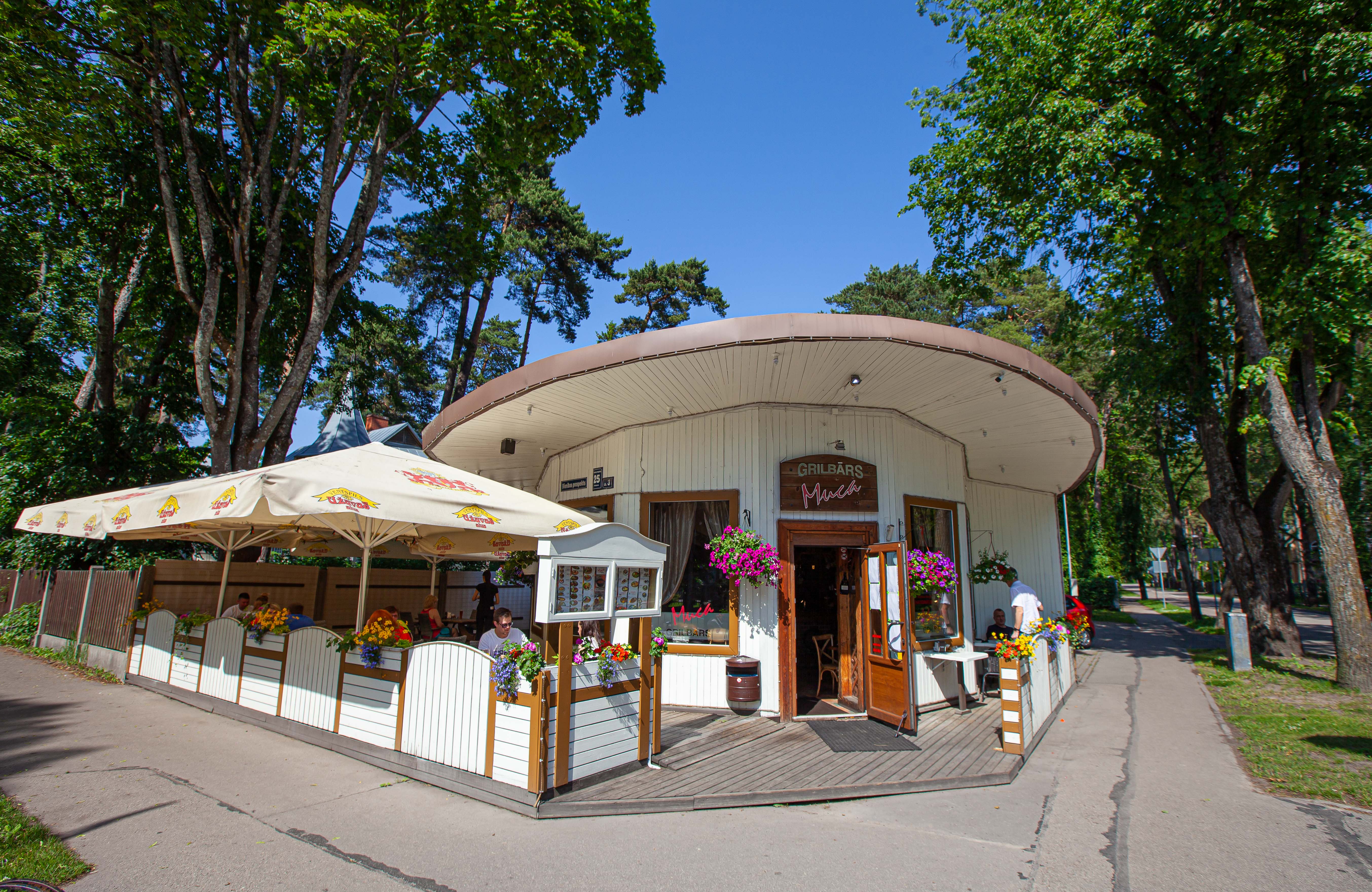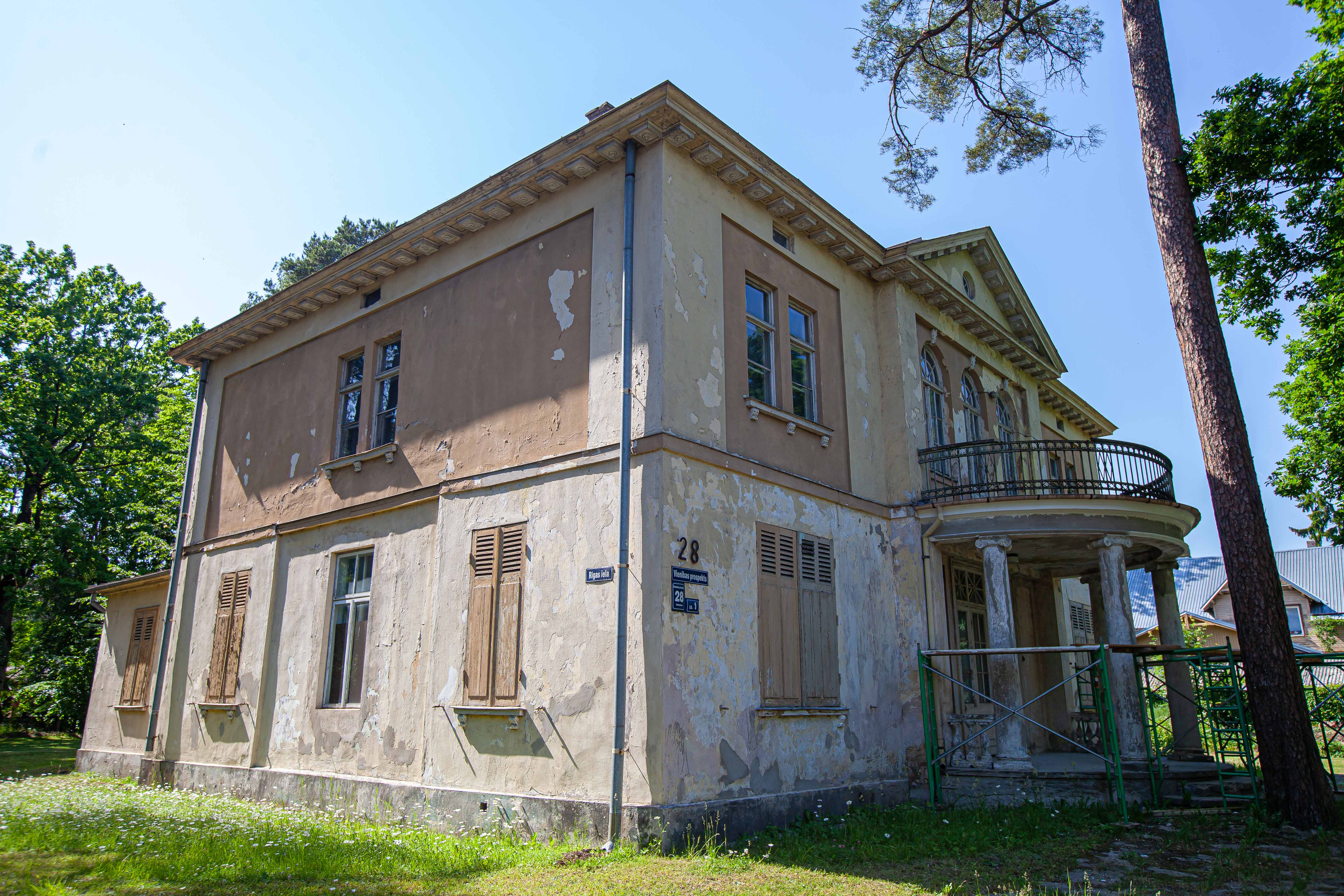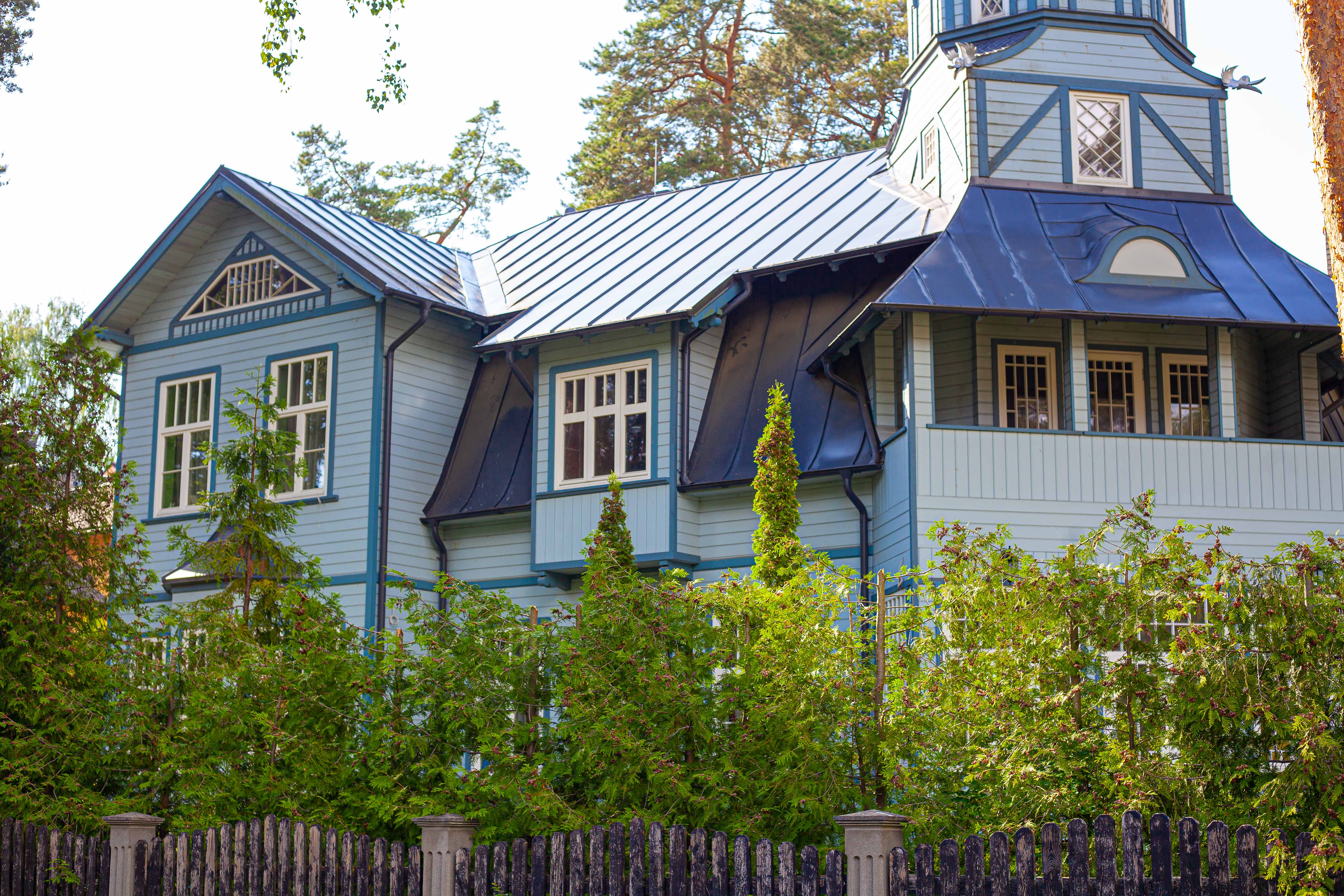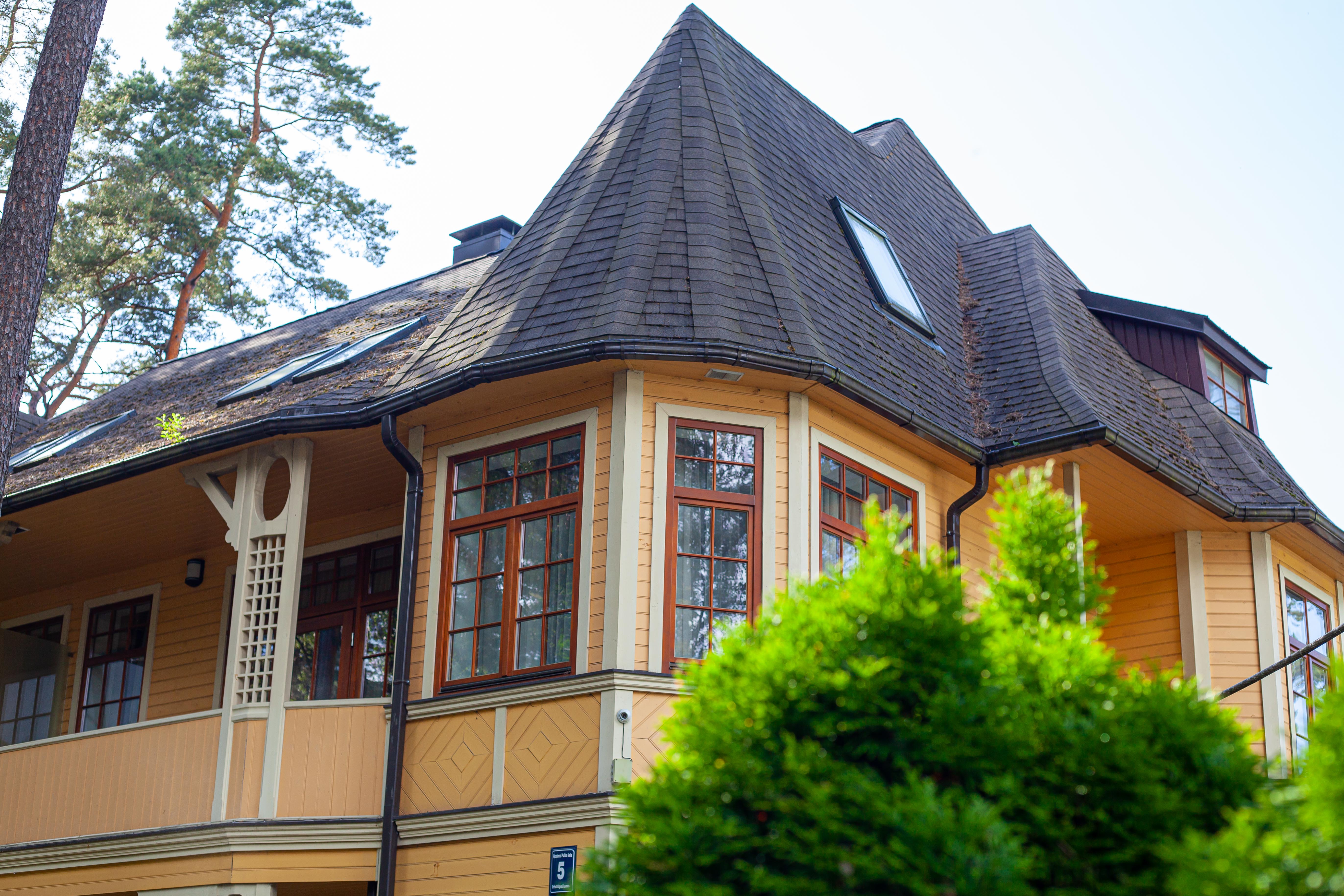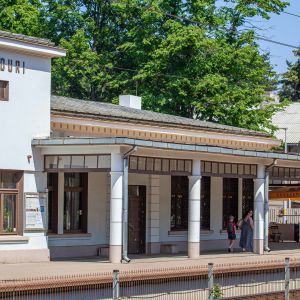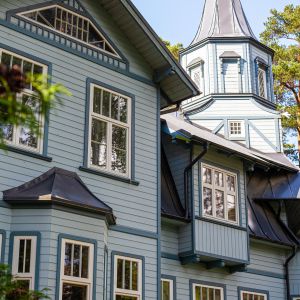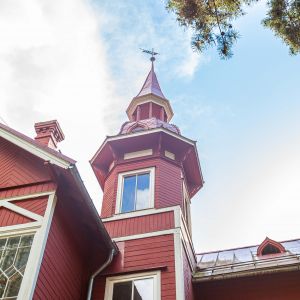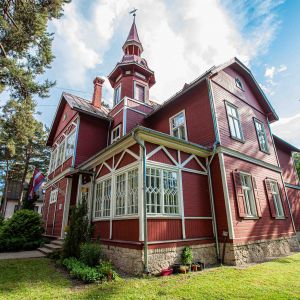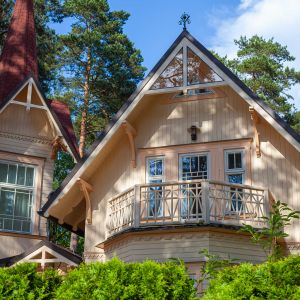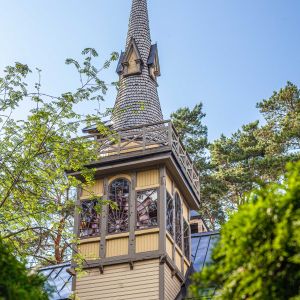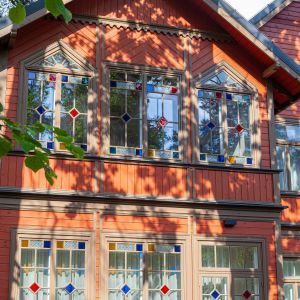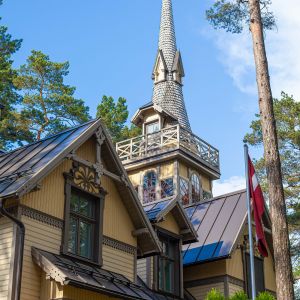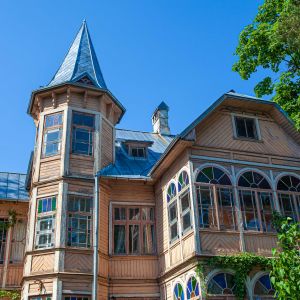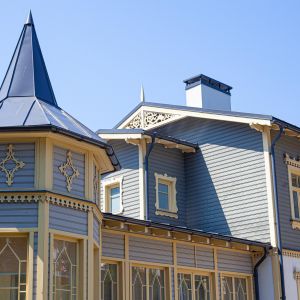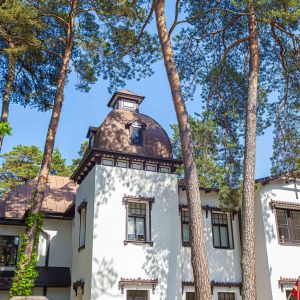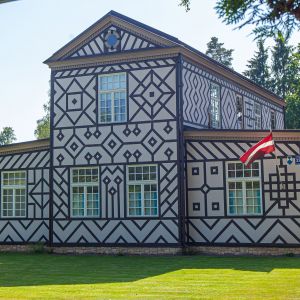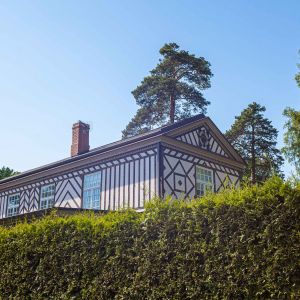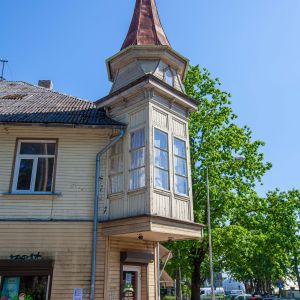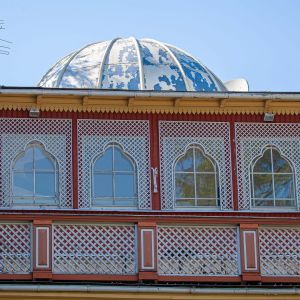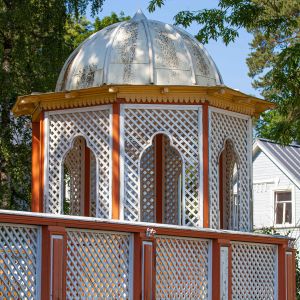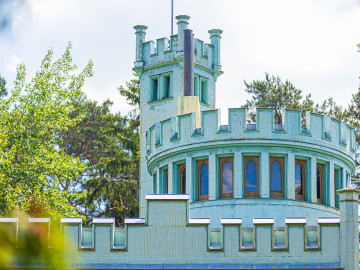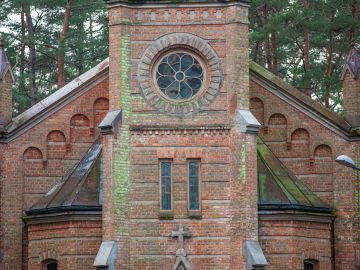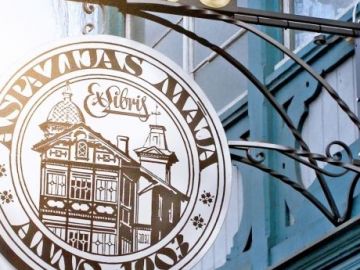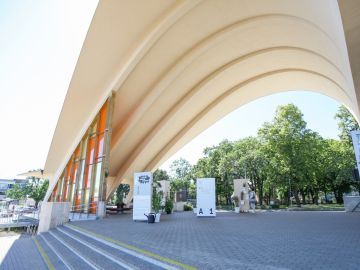Old Bulduri. The Realm of Flowers and Wood Carvings
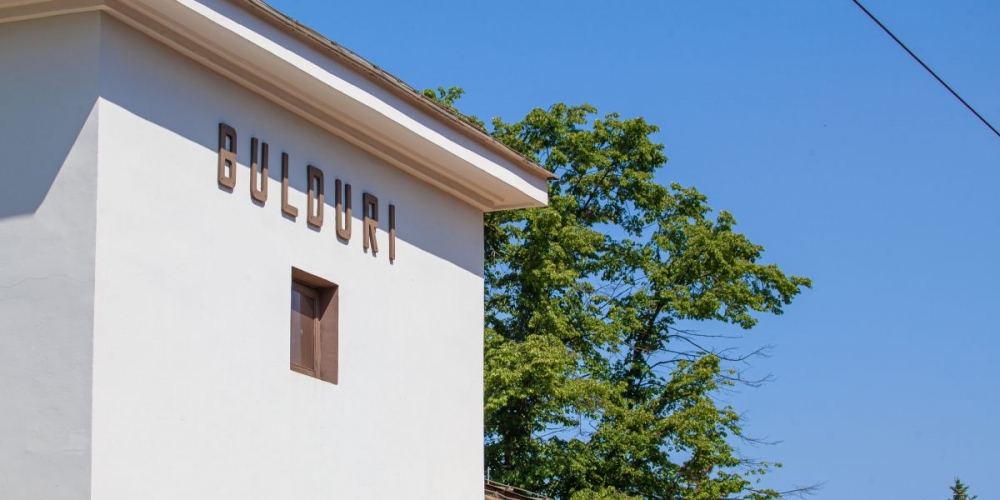
The oldest part of the Bulduri Manor between the railway and the Lielupe River is called Vecbulduri (Old Bulduri). It once was a fishing village on a river with a handful of summer cottages. In 1833 the manor lands were divided into separate plots, which were then rented to summer residents, while the manor barn were converted into premises for guests.
Open route as PDF1.72 MB
Open with Google Maps
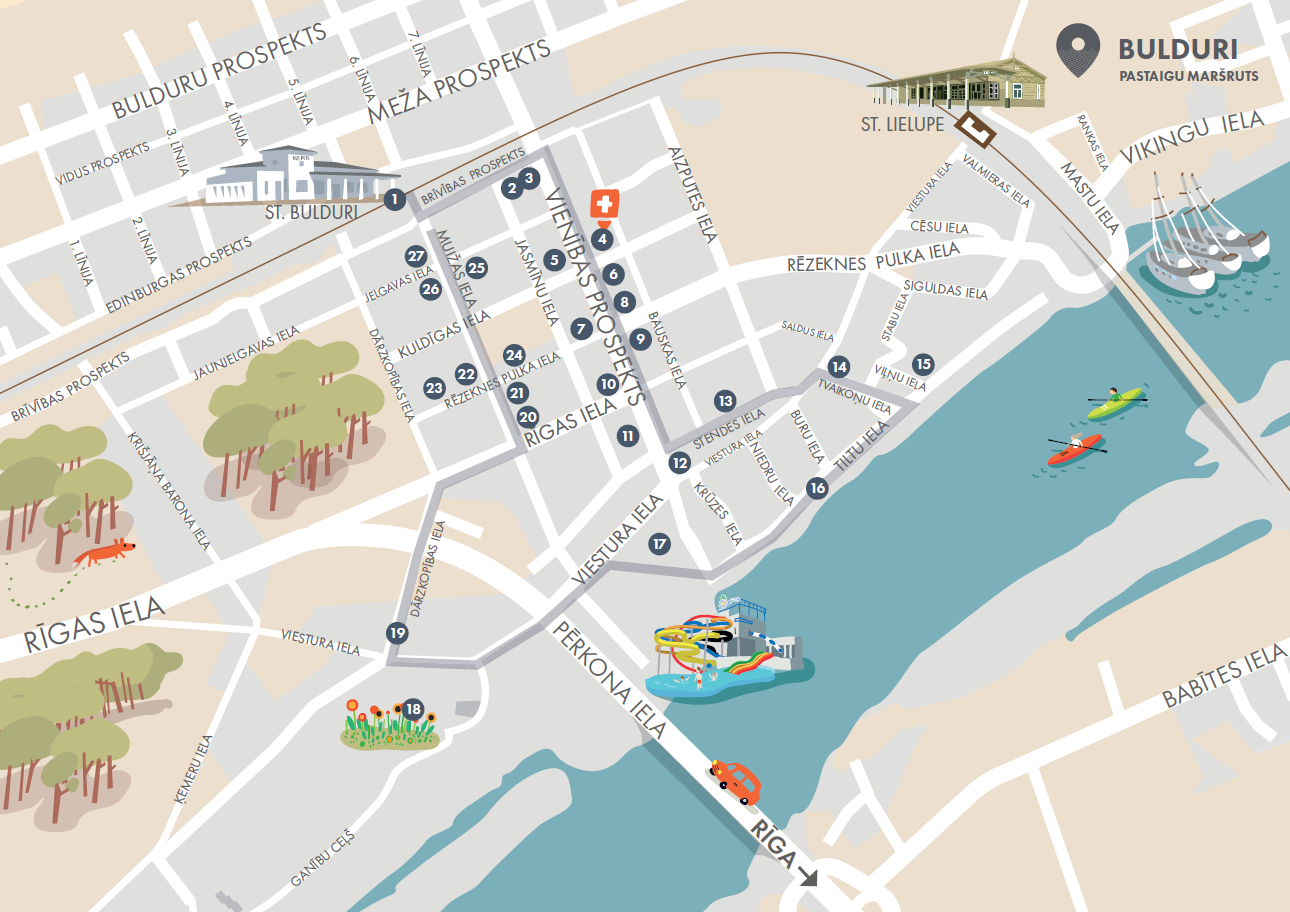
In the 1830s, the district became a favorite bathing place among Riga's residents, to which one could get by a raft across the Lielupe River. In 1875 about 400 cottages were already built on the land around the Bulduri Manor.
On 2 March 1920 the Latvian government incorporated Bulduri into the newly formed Riga Jūrmala city. In 1922 the Bilderliņi Manor (German: Bilderingshof, Russian: Бильдерингсгофъ) was renamed Bulduri.
The Vecbulduri summer cottage area on the bank of the Lielupe river is a state monument of urban construction.
1.Railway station “Bulduri”
After opening the railway line in 1877, Bulduri became the first station in Jūrmala. In 1947, after the original wooden building of the Bulduri station was destroyed in World War II, a new functionalist stone building designed by the architect Voldemars Ozoliņš was opened and served as a typical example of the 20th century tradition of railway station construction in Latvia. In 2015 the station building and the platform were modernised.
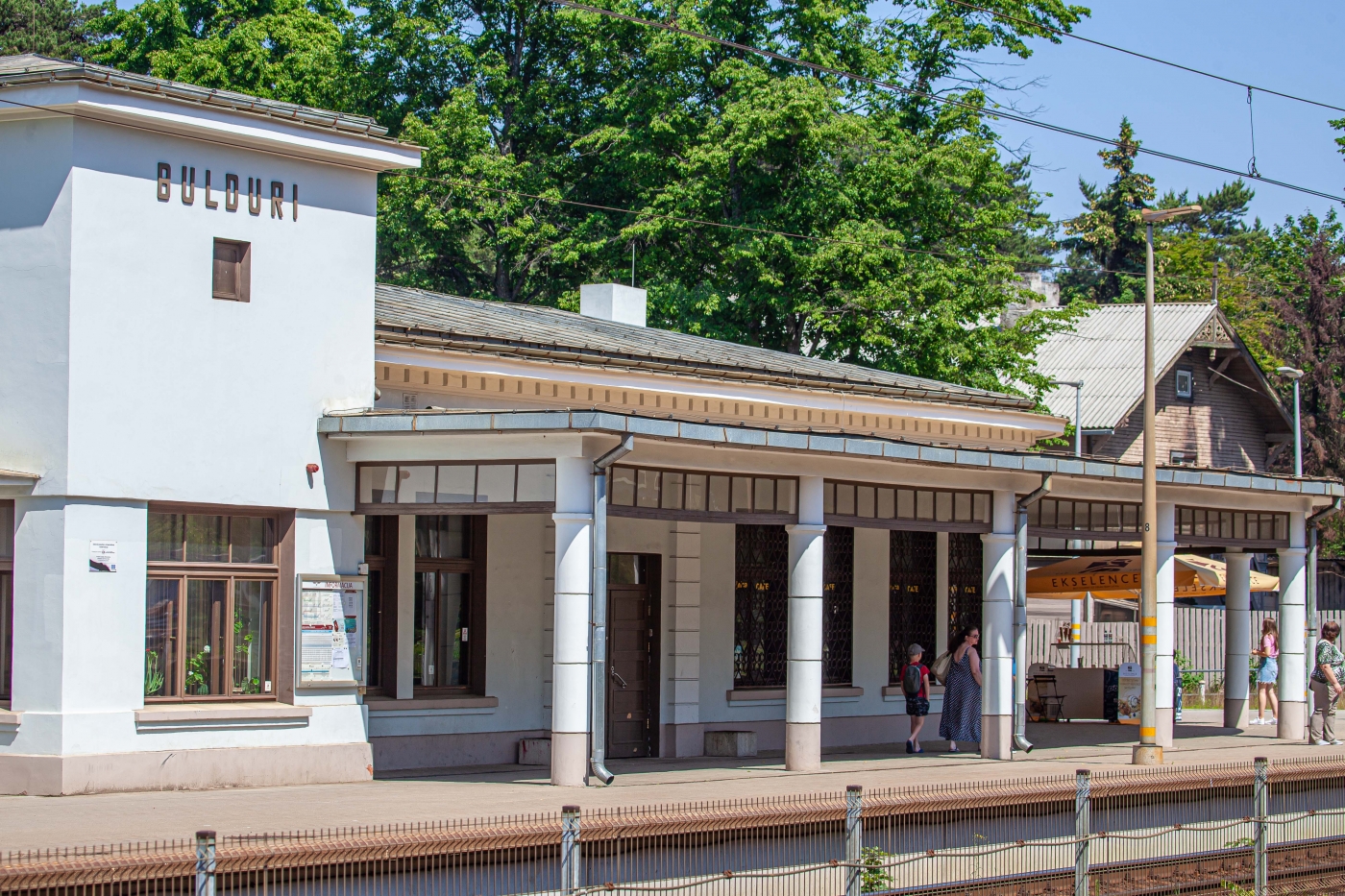
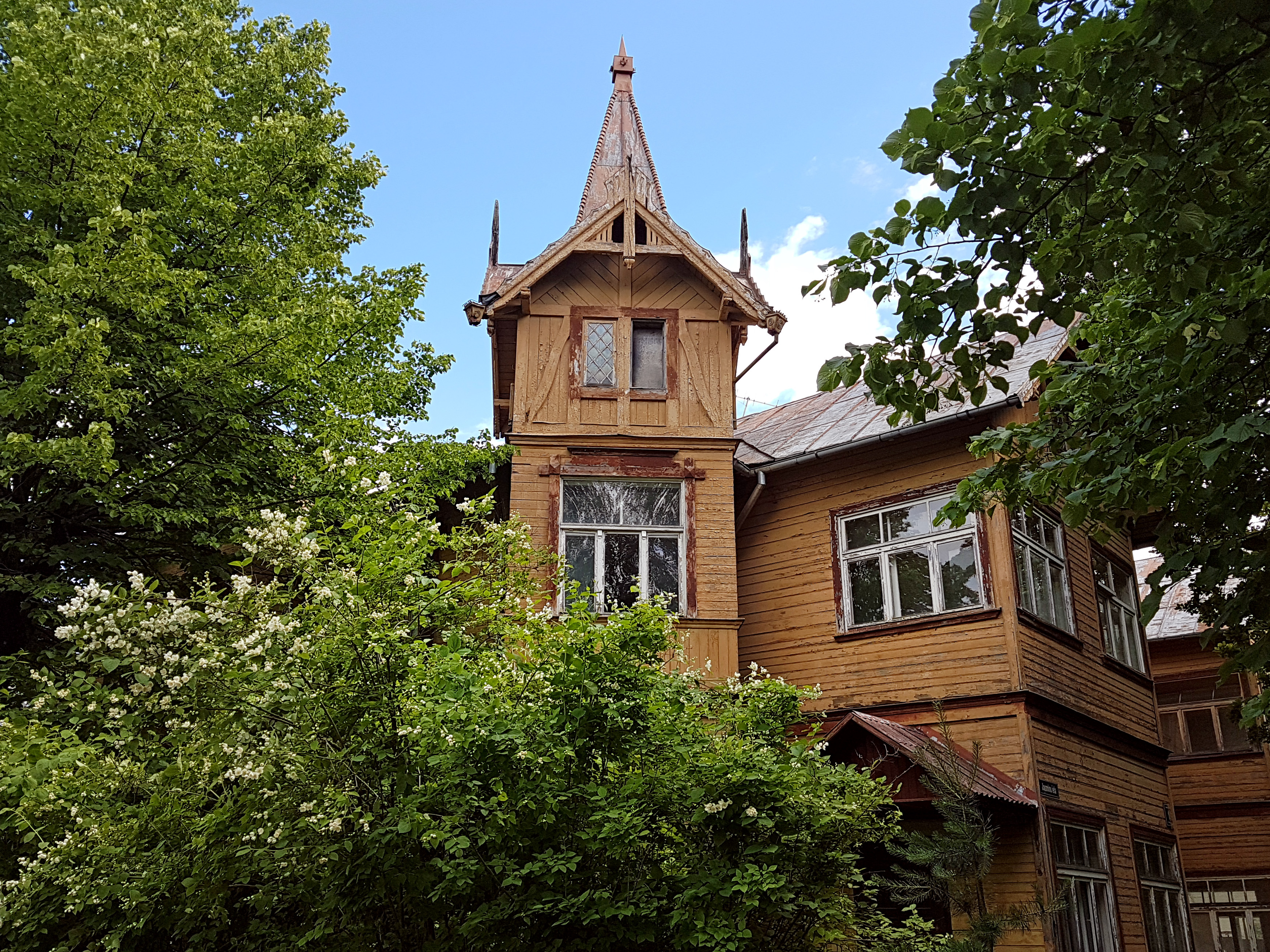
3. Vienības prospekts 12
Architectural monument. The building was constructed at the begining of the 20th century. Historically, it was a residential building with shops on the ground floor, as the nearby market also affected trade on the other side of the railway.
4. Vienības prospekts 19/21
The Jūrmala hospital building was constructed in the 1960s. The multi-profile hospital was opened in 1949 and after that annually and repeatedly expanded. The maternity ward of the hospital is popular among young mothers and it is the place of birth not only for the new residents of Jurmala, but also for babies from the surrounding areas.
5. Vienības prospekts 20
Architectural monument. The plot contains two buildings constructed at the beginning of the 20th century, which perfectly characterise the distinct wooden architecture of Jurmala. They have been renovated and converted into apartments for guests. The buildings have glass verandas which characterise Jurmala's historical wooden architecture, as well as rich decorative woodcarvings.
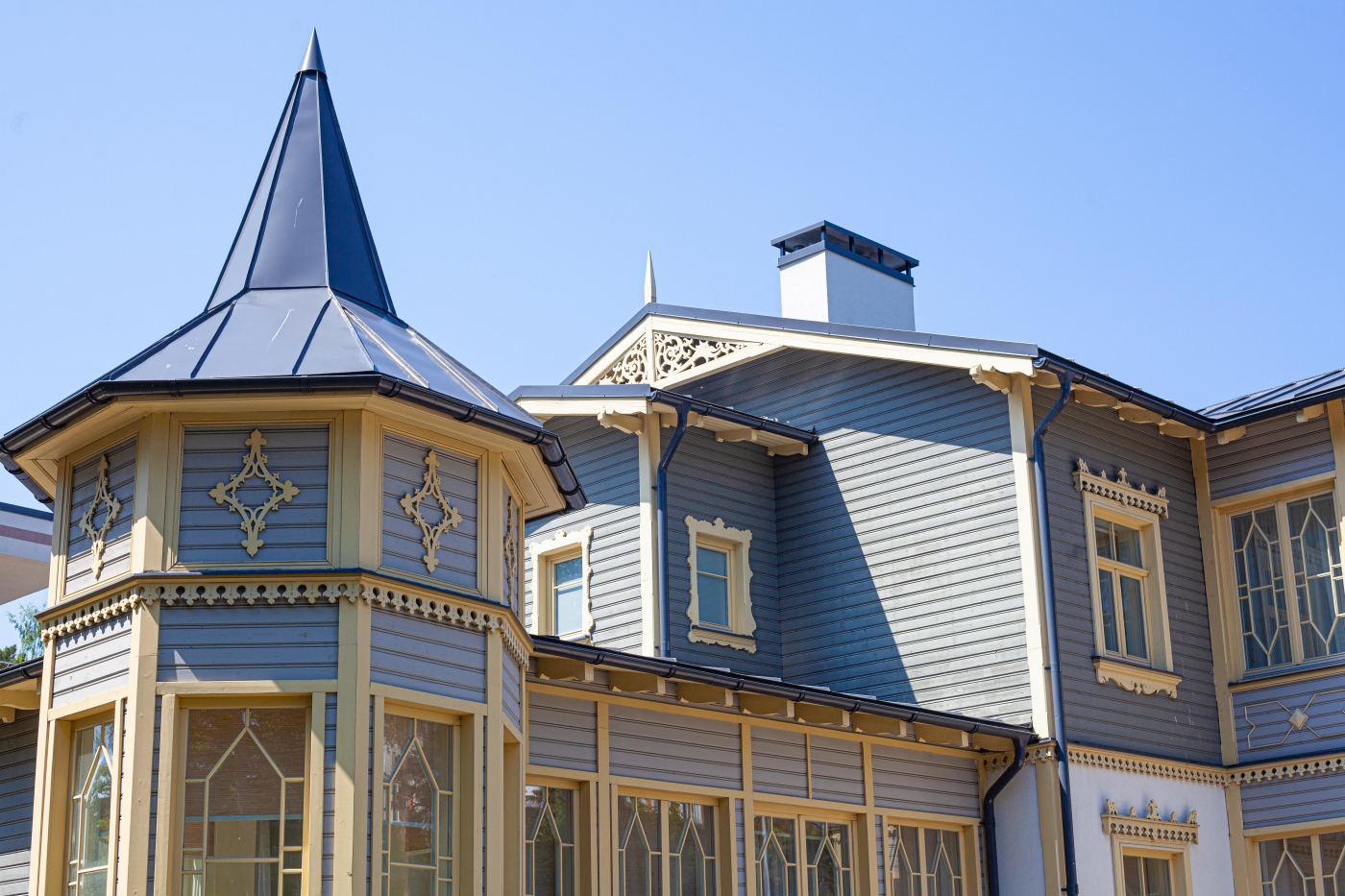
6. Vienības prospekts 23
Currently, the building houses the Latvian Christian Academy, which offers higher education in theology, biblical art and iconography, among other programs.
7. Vienības prospekts 24
National monument of architecture. The buildings were constructed at the begining of the 20th century. It is a rare case of two identical buildings on the same plot. The buildings have the characteristic glass verandas of the Jūrmala's historical wooden architecture and a rich variety of decorative carved details in the lines of Art Nouveau. The original wrought metal fence was preserved after reconstruction.
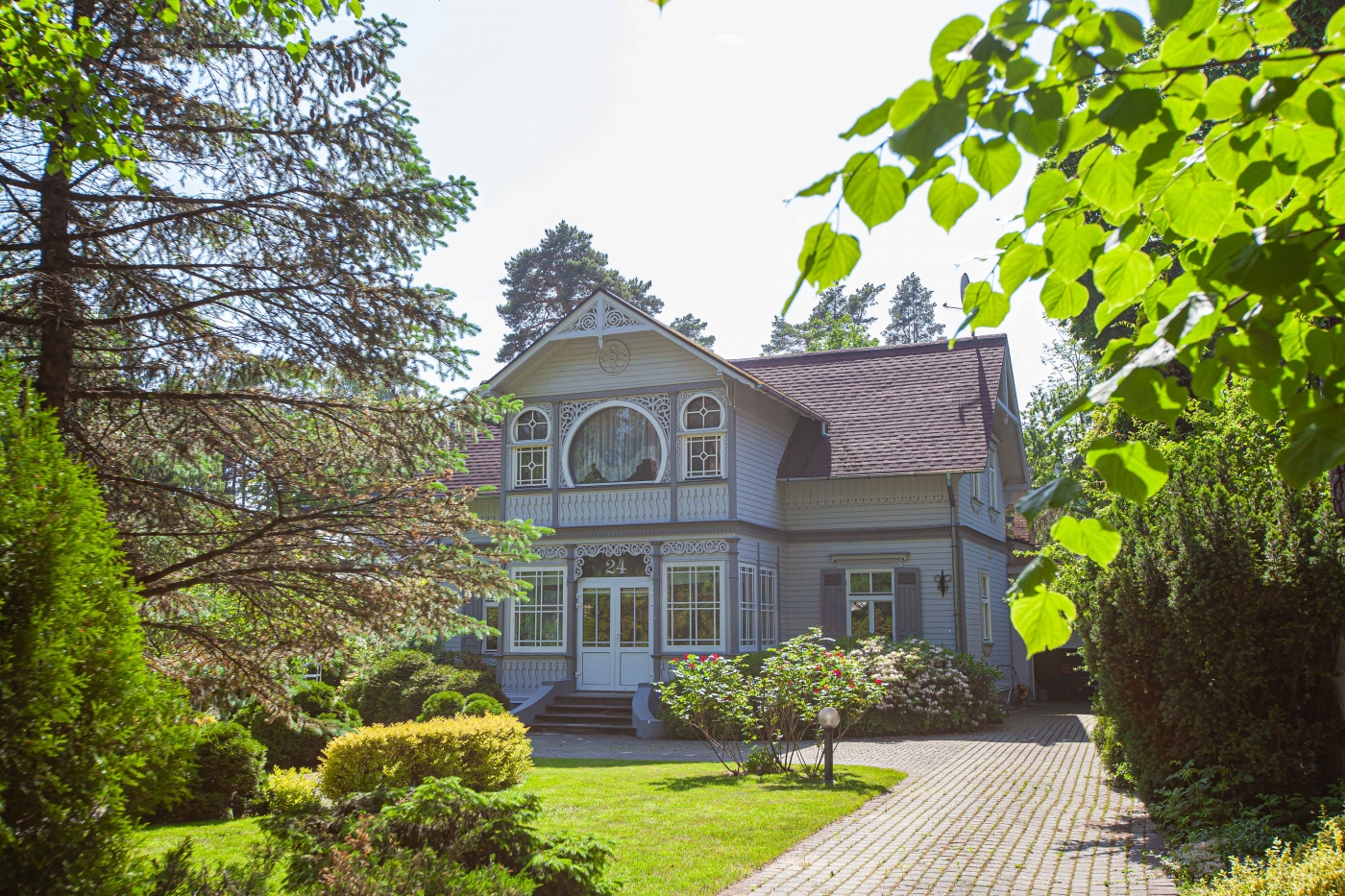
8. Vienības prospekts 25
Residential building and cafe “Muca”. The residential building was built around 1930. The two-story wooden building has a symmetrical composition with two corner towers. At the street corner there is a cafe building typical of the 1950s. Only two pavilion-type cafes have been preserved in Jūrmala, but such architectural style of cafe buildings was once very popular.
9. Vienības prospekts 27
National monument of architecture. The begining of the 20th century. Two historical wooden architectural buildings still sit on the plot, complete with the characteristic mezzanine floors, glass verandas and an impressive array of decorative details. The facade of the building stands out with its with applique decor in the style of National Romanticism.
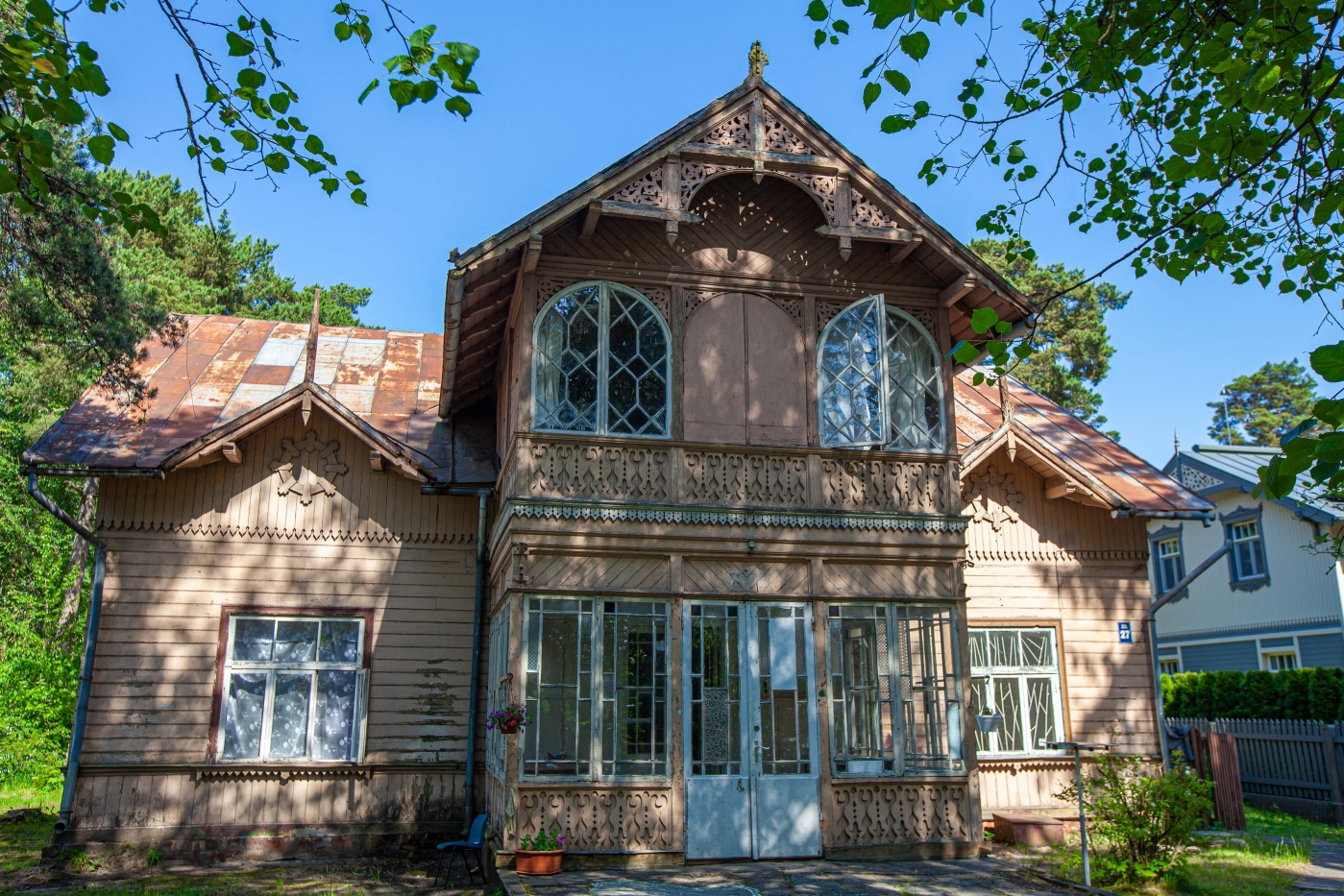
10. Vienības prospekts 28
Architectural monument. The building was constructed according to the design by the architect Eižens Laube in a modernised Classical style. It was once home of the construction entrepreneur Ludvigs Neiburgs (1873-1948).
11. Vienības prospekts 32
Local monument of architecture. The building was constructed at the end of the 19th century and is considered an example of the artificial timber framing technique (fachwerk). In 1977 the youth cafe “Ave sol!” was opened in the building. After the opening of the cafe in 1977, it became the site of various themed events and exhibitions.
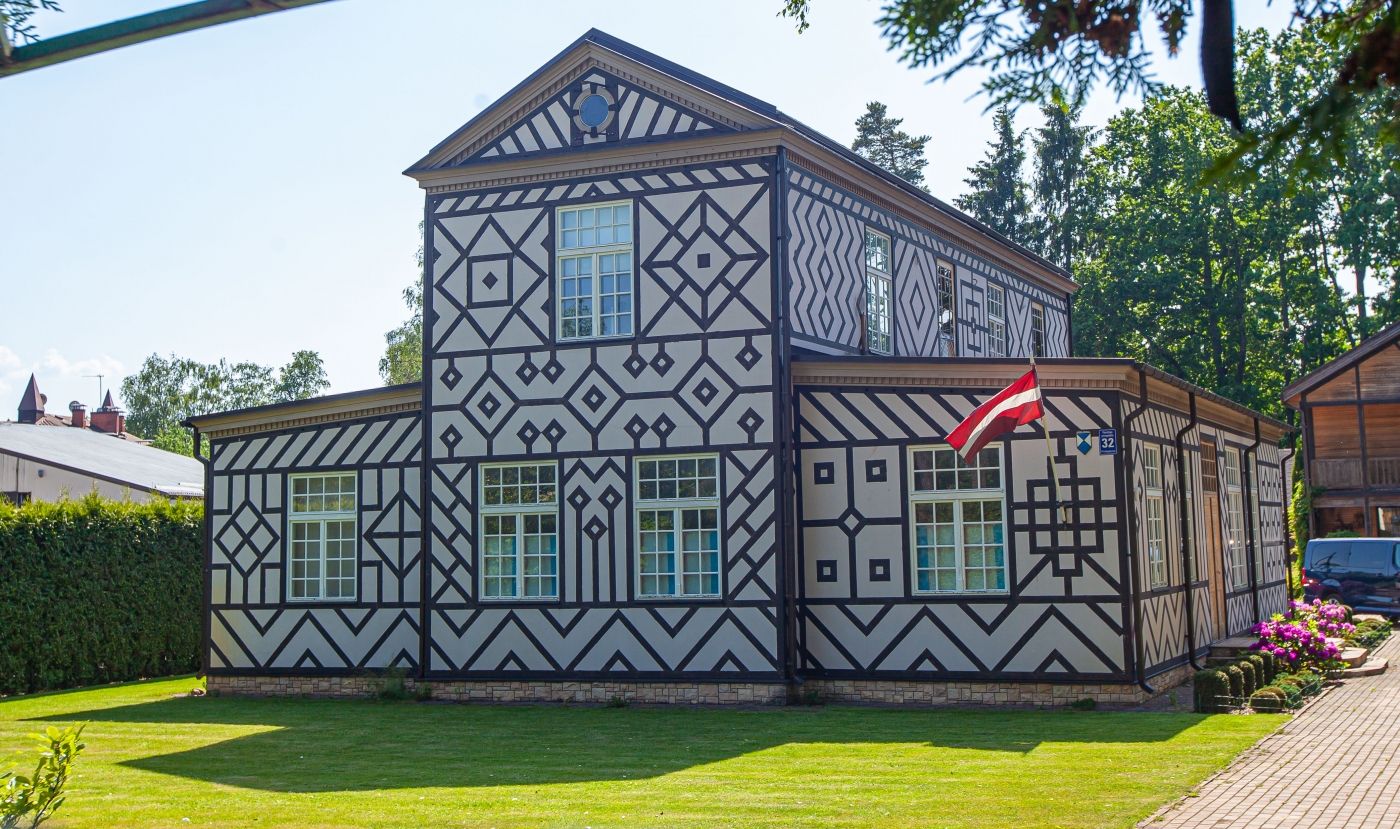
12. Vienības prospekts 35
The building was constructed at the beginning of the 20th century and currently houses the pastry shop “Raušu fabrika”, bicycle rent “Veloman” and a grocery shop. If you wish, you can continue your route after tasting a freshly baked cake and renting a bicycle right here on site.
13. Stendes iela 11
National monument of architecture. The architecture of this early 20th century building uses asymmetric volume compositions characteristic of the period, as well as Neo-Renaissance style elements in the semi-circular arcade of the veranda. The poles of the fence, especially at the entrance gate, are quite expressive, including concrete columns with flower vase-shaped capitals.
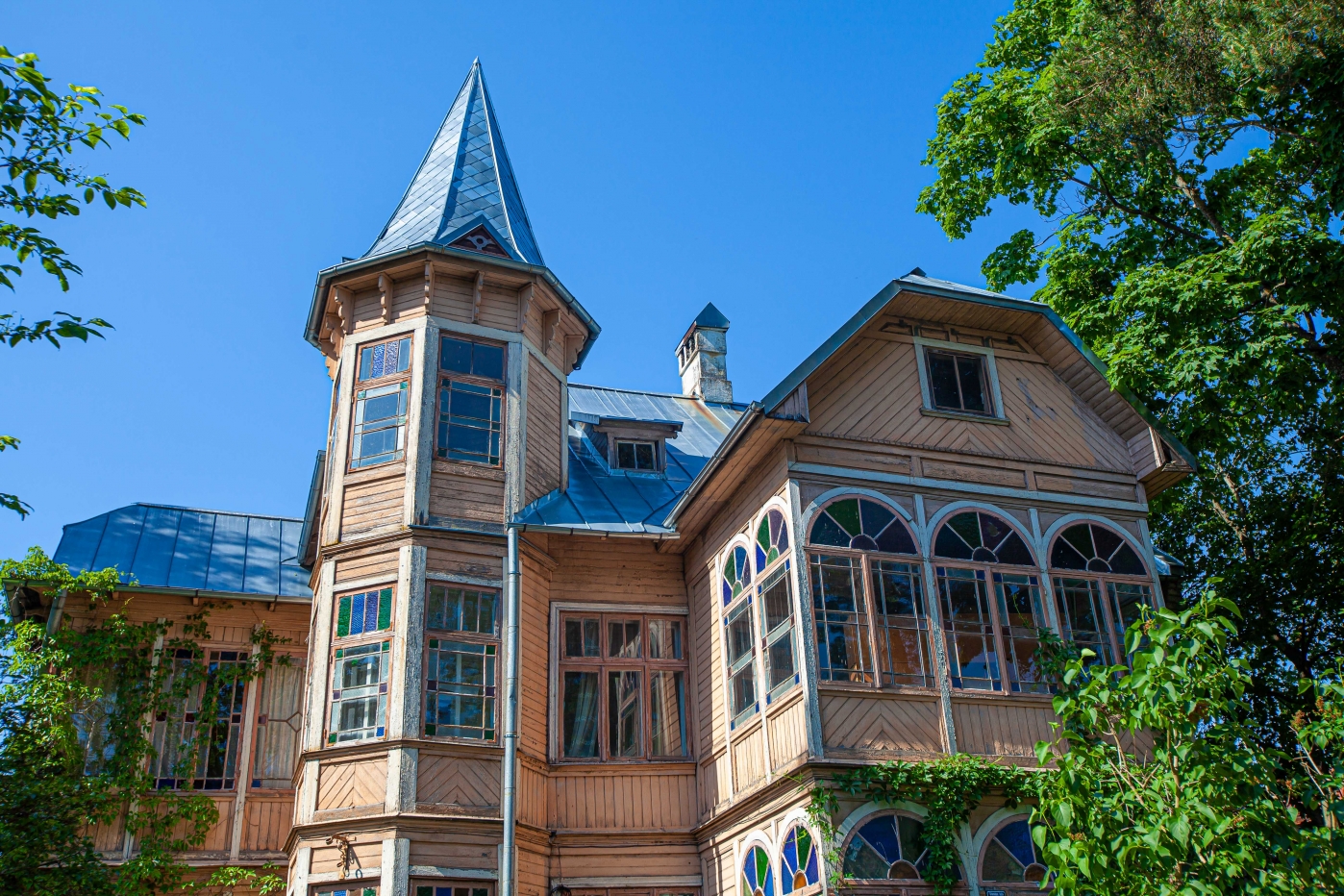
14. Tvaikoņu iela
National monument of urban construction: the Vecbulduri summer cottage district. It is characterized by an irregular, even chaotic network of streets, formed by the roads and trails of an ancient fishing village, small plots of land and a large building density. With the development of steamboat traffic along the Lielupe River, a pier was created at the end of Tvaikoņu iela.
15. Viļņu iela 3
National monument of architecture. The Neo-Renaissance style building was constructed at the turn of the 20th century. It is a one-story brick building with an elevated central part (Belvedere), covered by a dome, demonstrating the influence of Eastern Architecture. The architecture of the building is complemented by a garden pavilion with an identical dome and a supporting wall of decorative brick masonry, which also serves as a reinforcement of the Lielupe River bank.
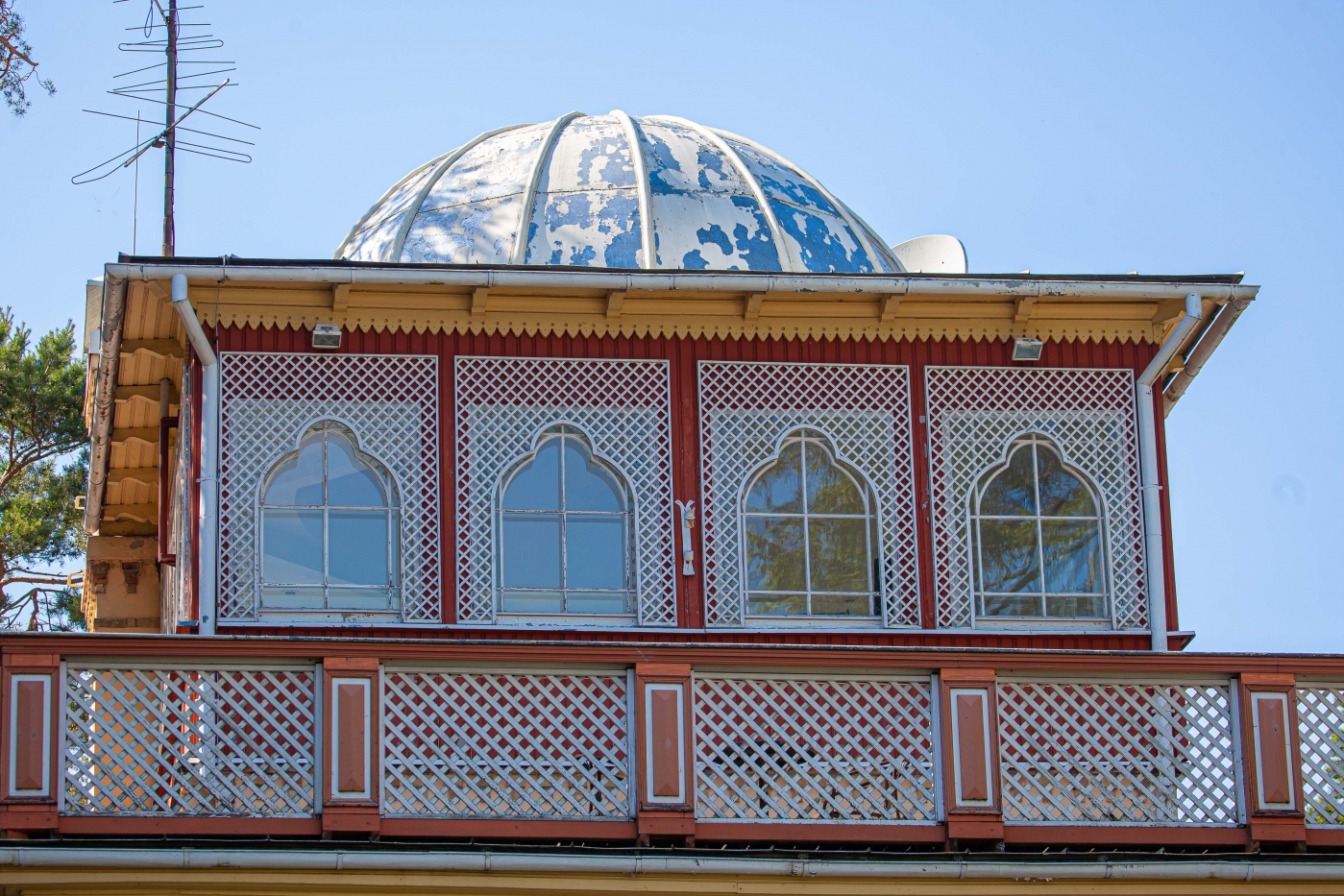
16. The intersection of Tiltu iela and Vienības prospekts (parking lot near restaurant “Laivas”)
In 1932 a pontoon bridge over the Lielupe River for carriage and car traffic was built here, therefore Viļu prospekts (formerly – Marijas, Rēzeknes prospekts) became the entry point and the main traffic artery of the city, which also largely determined its building density and the location of public institutions.
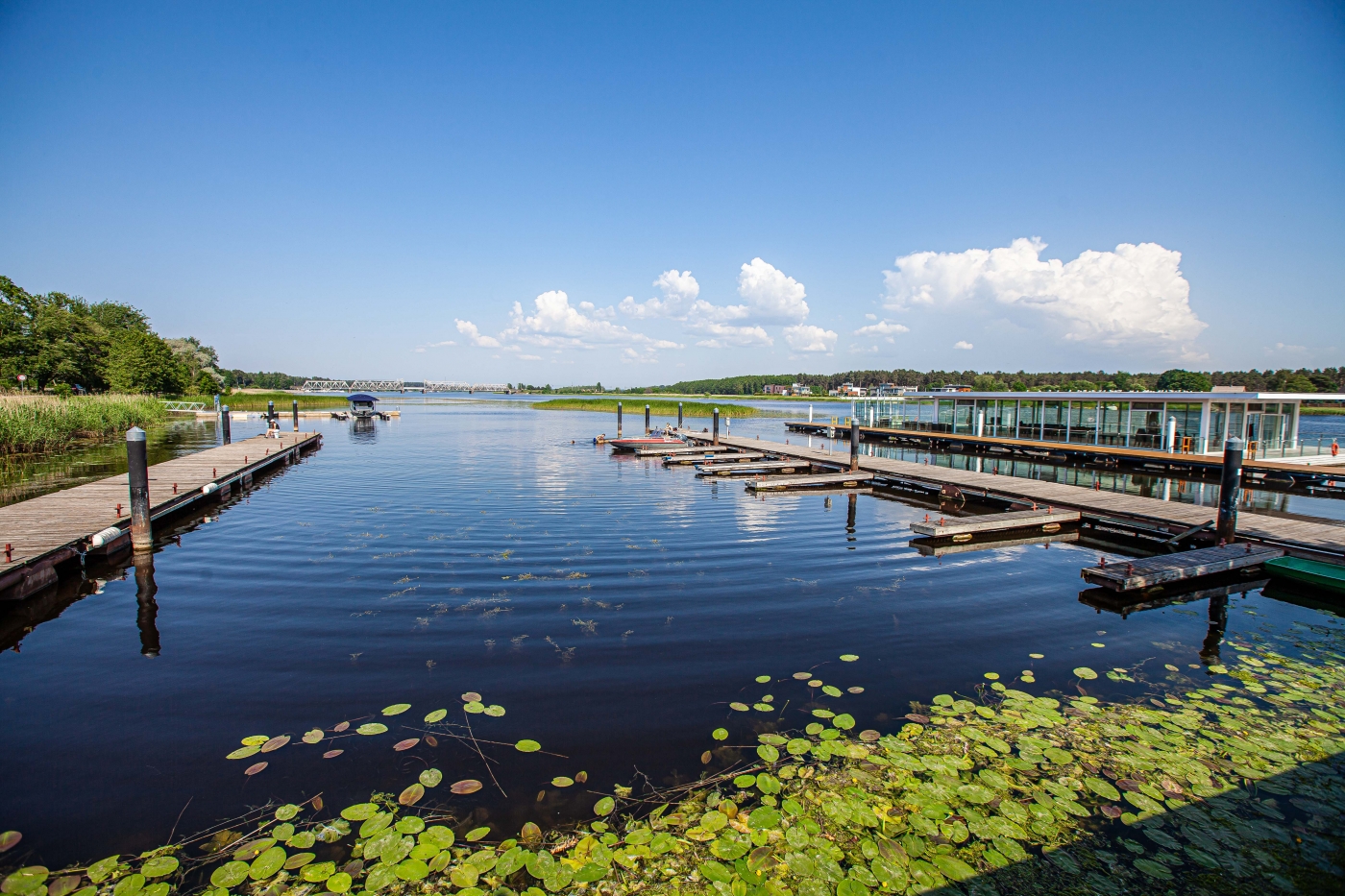
17. “Līvu akvaparks” water park and road bridge over the Lielupe River
The new reinforced concrete bridge for car traffic was built in 1962. In 1969, “Jaunība”, the largest sports stadium in Jūrmala, was opened, which hosted large-scale competitions as well as various sports and resort festivals. At the end of the 20th century, a supermarket was built on the former site of the stadium and later, in 2001, the construction of a water park started next to it. The “Līvu akvaparks” water park was opened on 30 December 2003 and it is the largest three-story water park in Northern Europe with an additional zone open during the summer season.
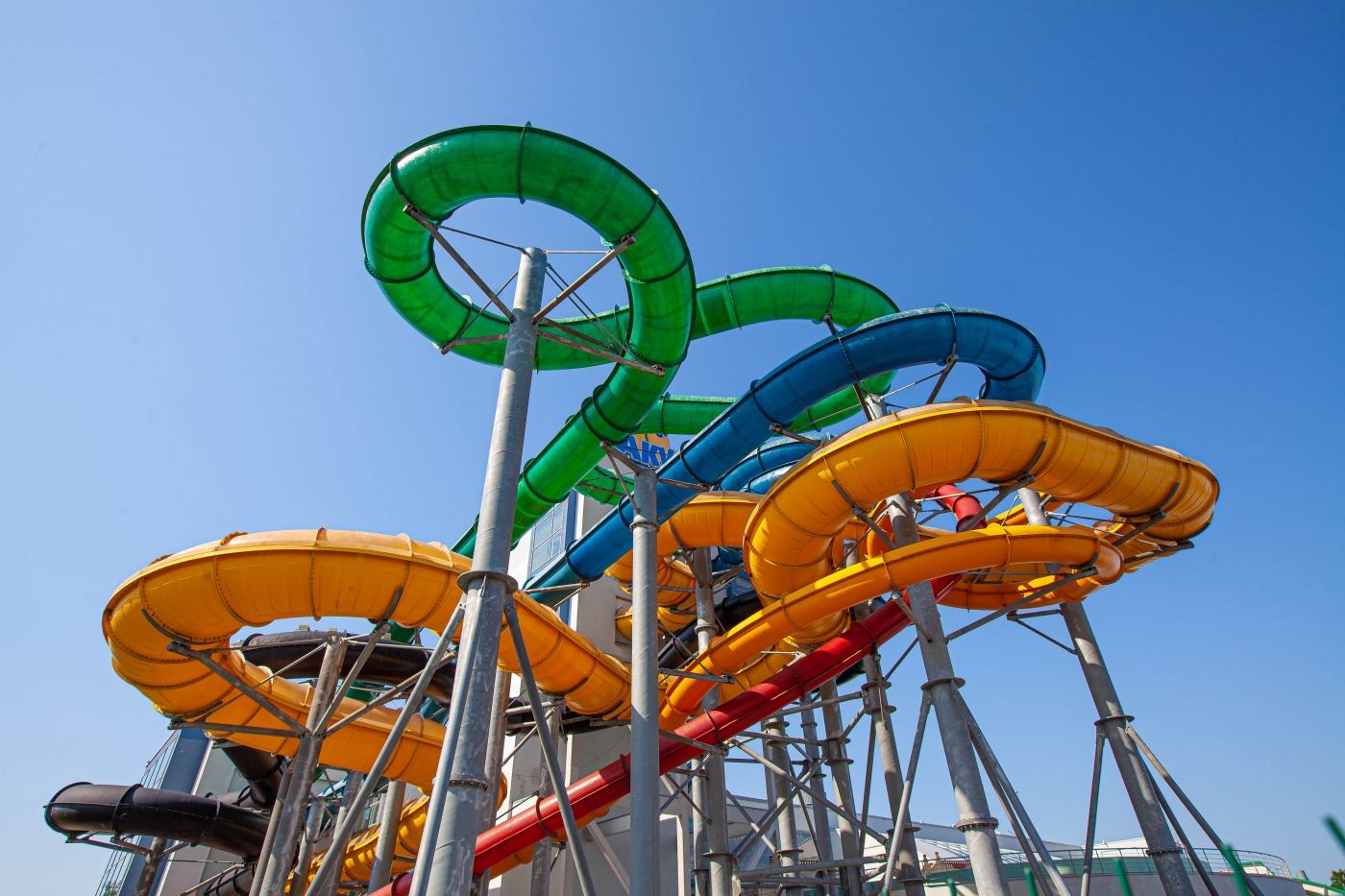
18. Viestura iela 6, Bulduri Horticultural School
Bulduri Horticultural School is the most famous educational institution in Jūrmala and the oldest school in Latvia with a focus on horticulture. In 1905, the Riga branch of the Horticulture Association of the Russian Empire was given the Bilderliņi Manor with 12 ha of land free of charge by the state for founding a horticulture school, a training garden and a tree nursery. In 1910, the Bilderliņi Horticulture School, the first such school in Latvia, was founded. Over the years, many outstanding gardeners, agronomists, landscape architects, florists and other specialists have graduated from the school.
The vast territory of Bulduri Horticultural School is shaped as a park, most of which is publicly accessible. The rhododendron shrubs and flower beds, planted and groomed according to the season, are especially magnificent. The territory of the school also holds the most modern greenhouse complex in the Baltics, where everyone can buy plants and flowers grown on site, as well as a unique project in Europe: a digital garden.
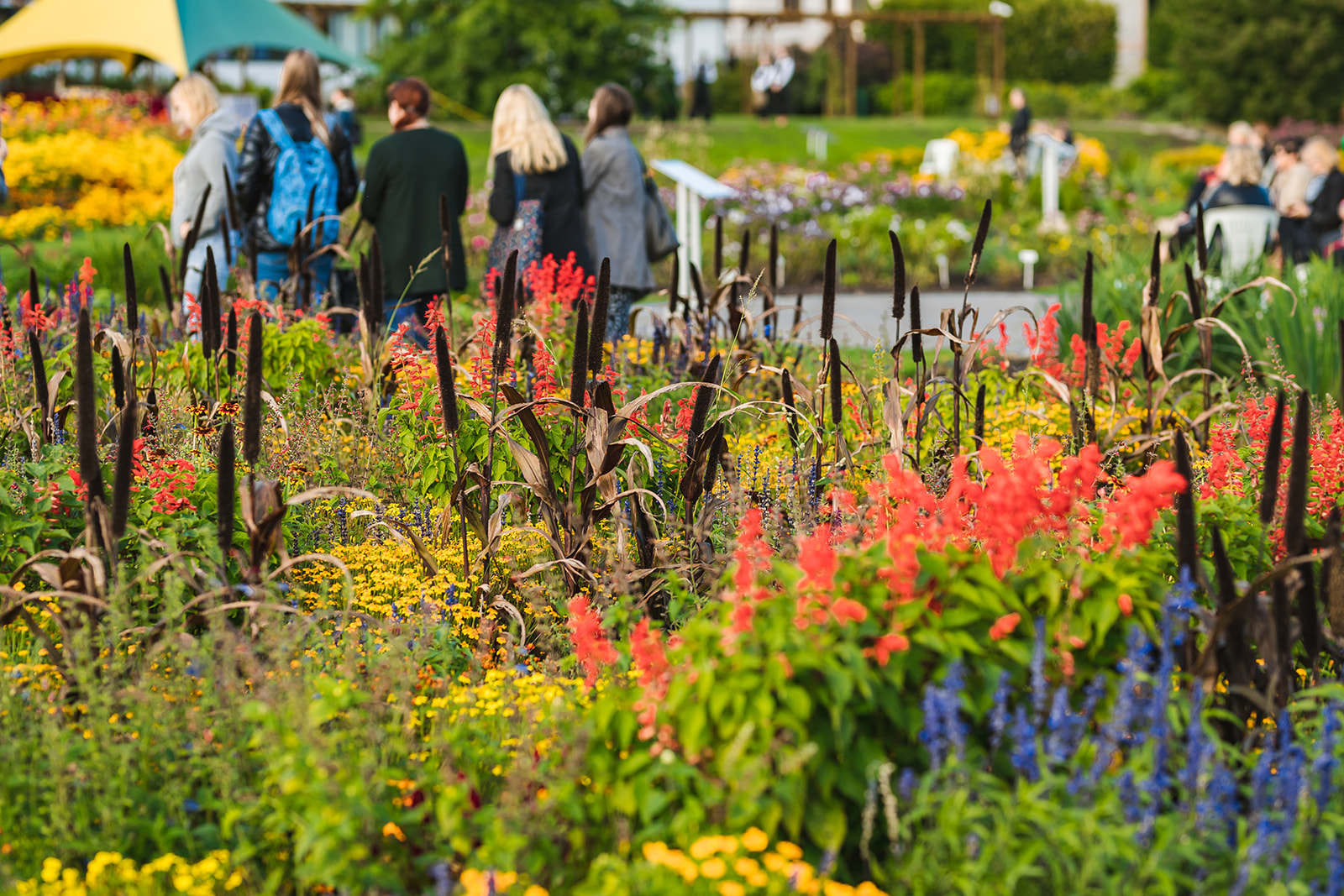
19. Dārzkopības iela
The beautiful oak avenue on Dārzkopības iela was planted by the former students of Bulduri Horticultural School in the middle of 20th century.
20. Muižas iela 19
Several valuable wooden buildings have been preserved in the territory. The most significant of them is a decorative corner building with a tower and a unique tower decor. Other buildings have coloured-glass verandas characteristic of the historical wooden architecture, decorative trusses and carved details. Currently, the buildings have been renovated and are a part of a residential complex.
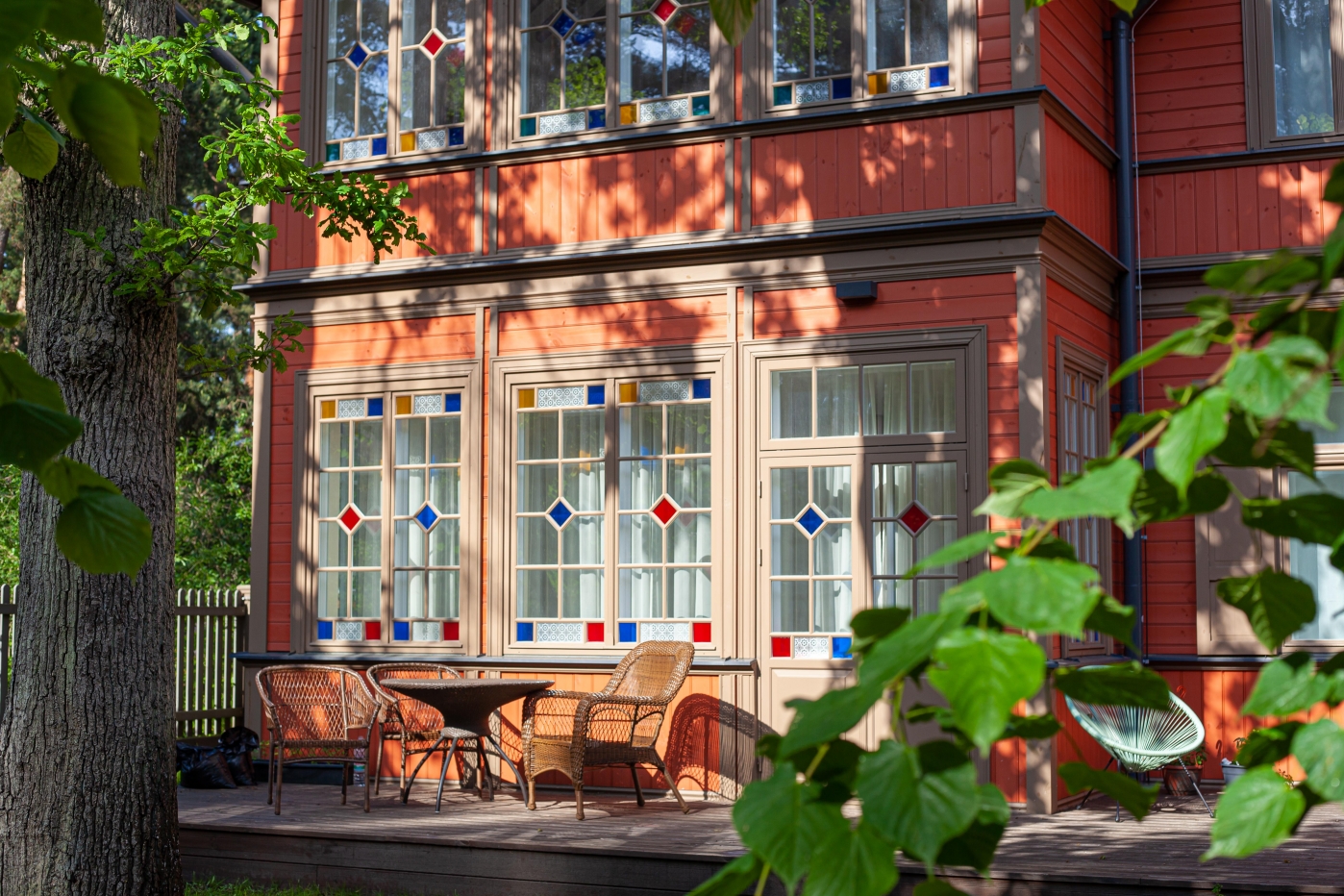
21. Muižas iela 15
Local monument of architecture. This two-story building was constructed at the begining of the 20th century. It has an asymmetric, fragmented composition, a corner tower characteristic of Jūrmala's historical wooden architecture and a wide range of decorative carvings.
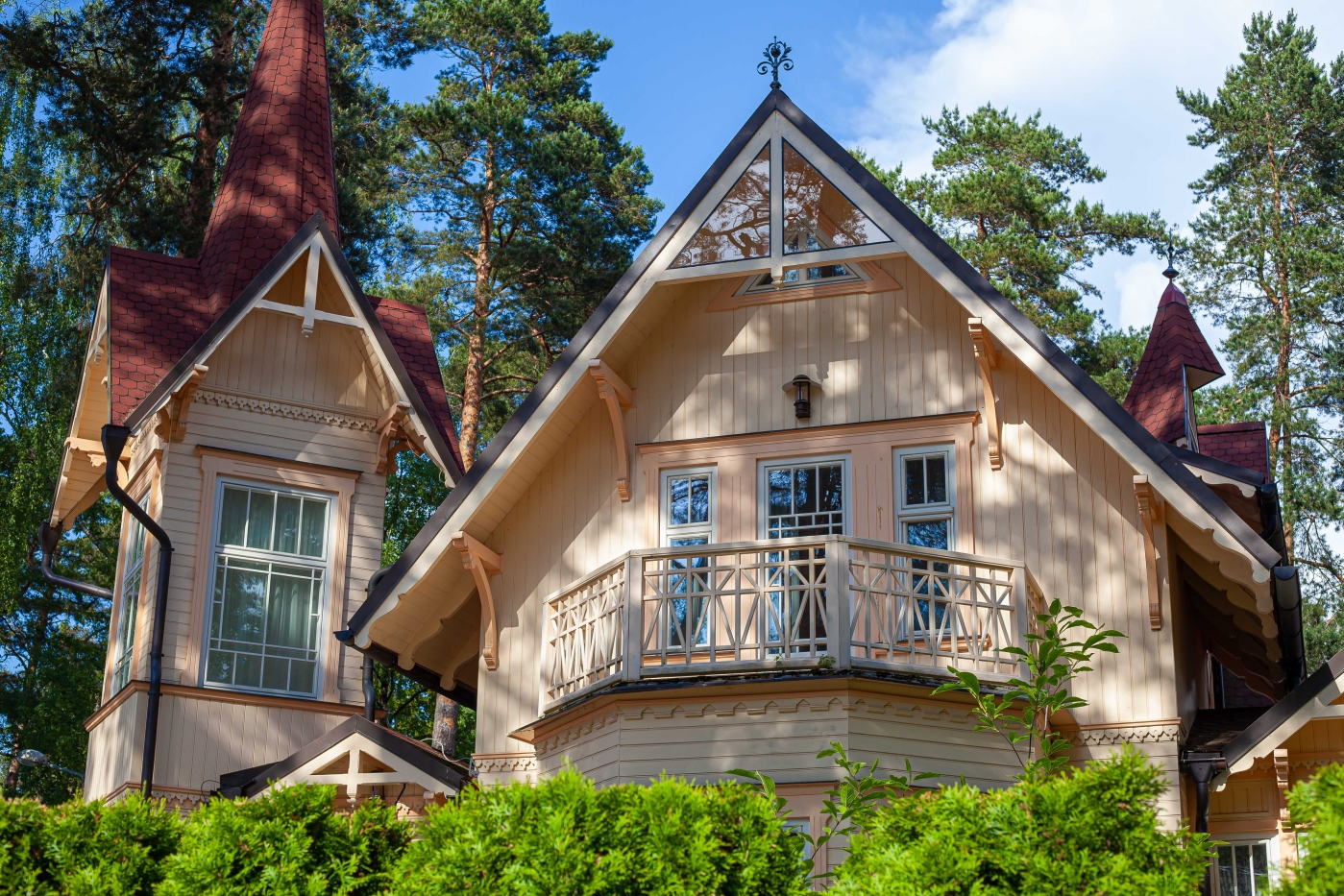
22. Muižas iela 14
National monument of architecture. The building was constructed at the begining of the 20th century to serve as a residential and boarding house.
23. Rēzeknes pulka iela 5
The building was constructed at the begining of the 20th century in the Swiss or summer cottage style, to serve as a boarding house. Its volume is accentuated by two tower-like corner structures connected by loggias. It is brought closer to the wooden architecture of Jūrmala by its wide windows as well as the distinctively intricate loggia pillars.
24. Rēzeknes pulka iela 9
National monument of architecture. The building was constructed in 1915. It is one of the most impressive Art Nouveau buildings in Jūrmala, vividly characterized by its picturesque asymmetry, the use of various materials (wood, glass, stone, metal) and carvings depicting plant motifs and imaginary creatures.
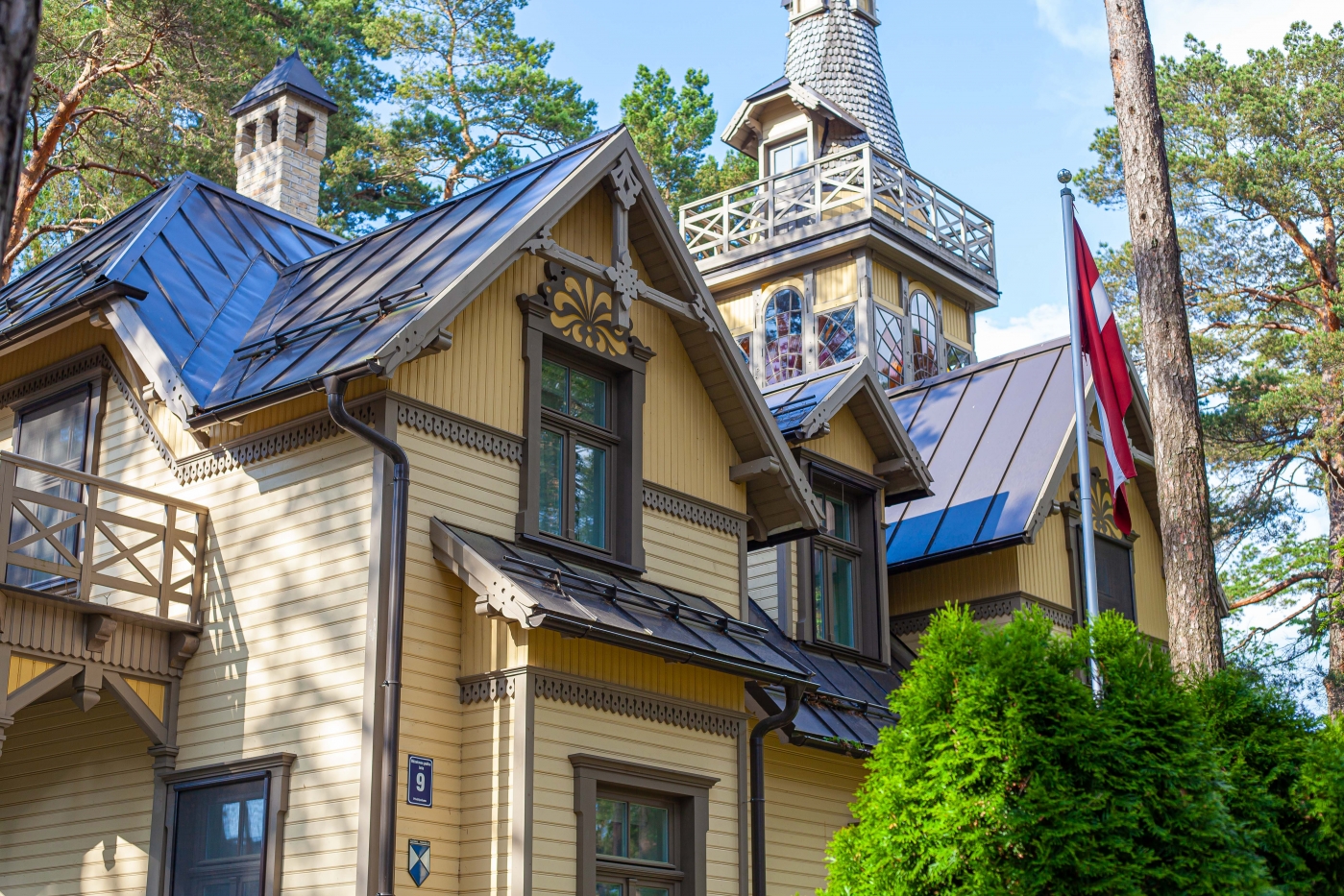
25. Muižas iela 7
The building was constructed in 1970s for the Jūrmala Trade Administration. Since 1993 it houses the Jūrmala Theatre, which celebrated its 40-year anniversary in 2019.
26. Muižas iela 6
The building was constructed in 1920 and it is a monument of urban wooden architecture, representing the essence of the best traditions of Jūrmala's wooden architecture. The building is mostly used for educational and cultural purposes. The city's elementary school was located in this building until 1970s. Currently, the Bulduri Exhibition House (previously Jūrmala Artists' House) operates here, hosting various exhibitions and art events involving spectators.
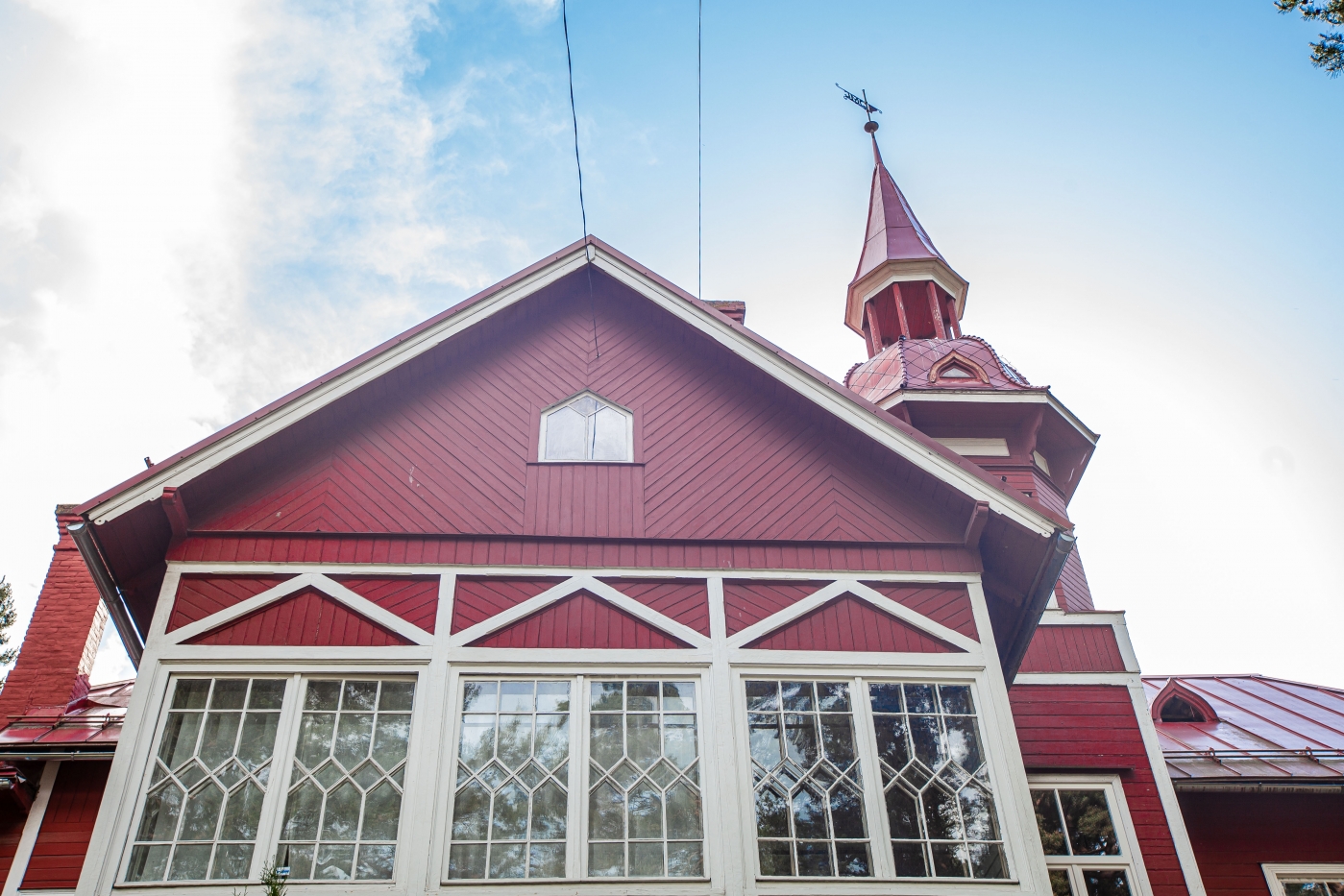
27. Brīvības prospekts 96
National monument of architecture. The building was constructed at the begining of the 20th century, intended as a boarding house. It is a two-story wooden building with tower-shaped structures at its corners. The building is decorated in the style of Art Nouveau. During the renovation in the 21st century, the original veranda glass panes were lost.
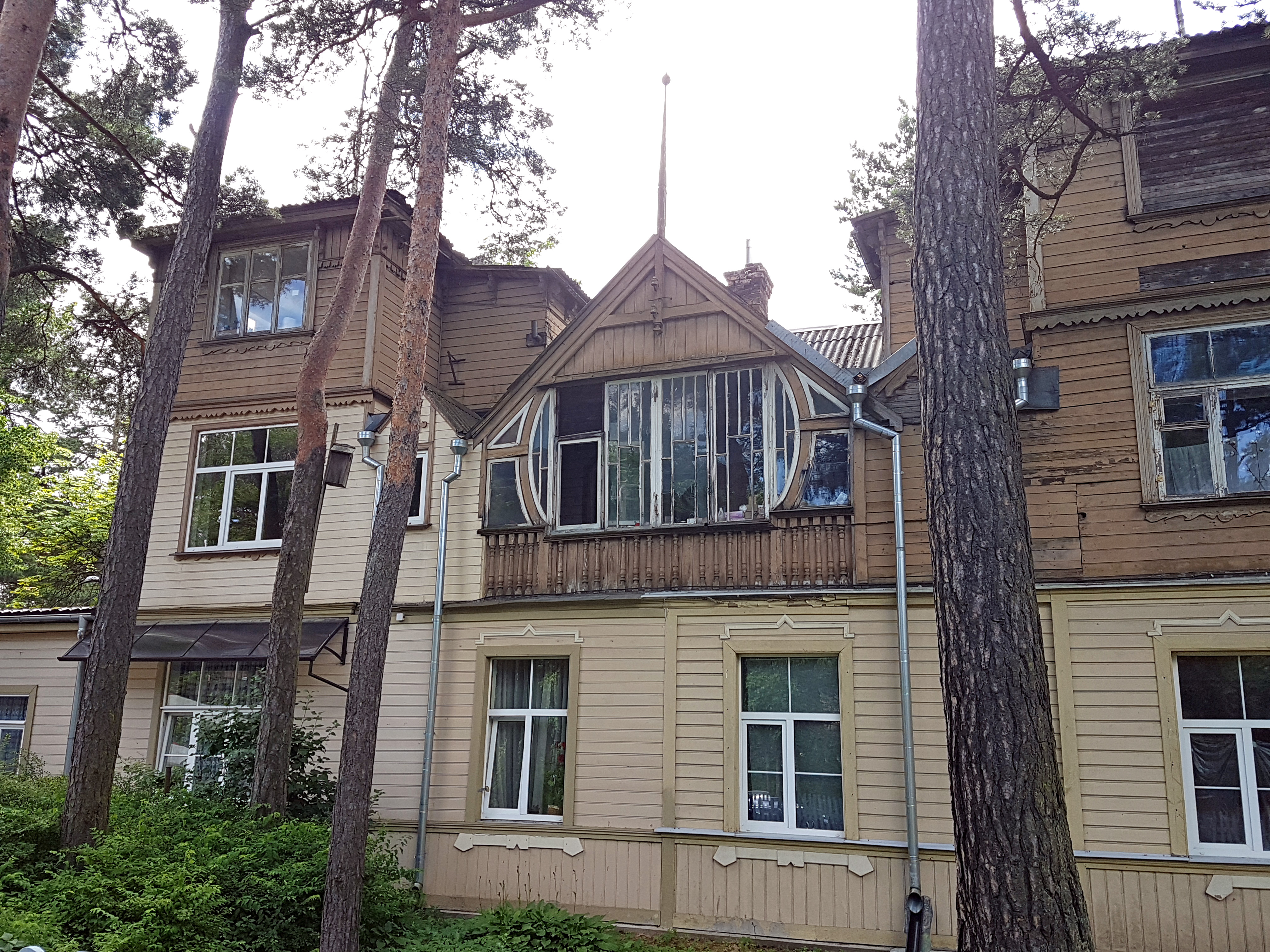
Route gallery:
